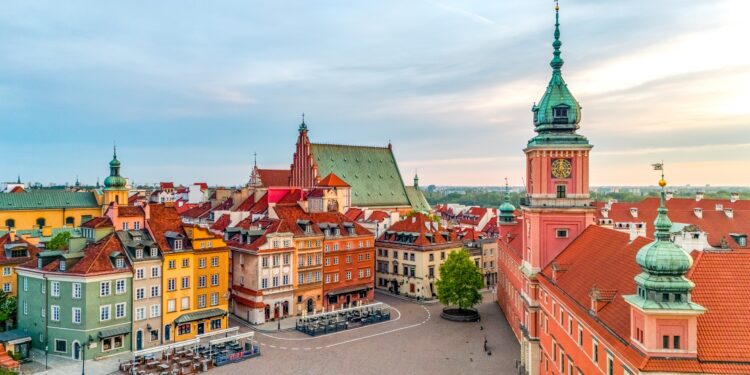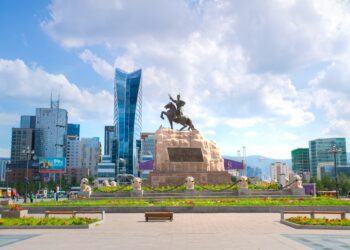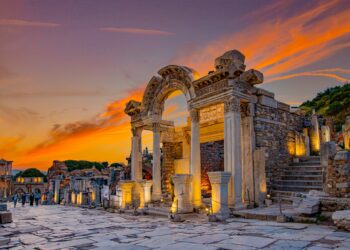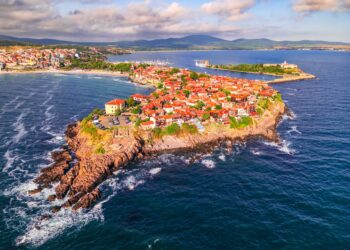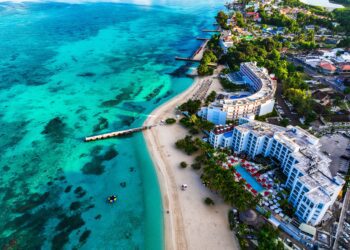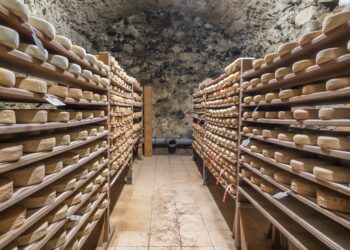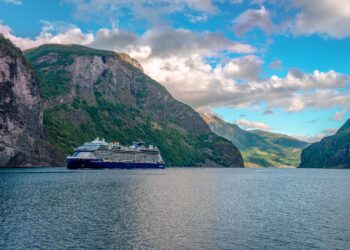As a place to vacation, Poland is still criminally underrated, mostly known in the travel industry for its emblematic cities of Krakow and Warsaw and its important WWII historic sites. You’ll soon see that to overlook this Eastern European gem means missing out – on impressive castles, charming palaces and excellent museums; on Baltic beaches, snow-capped mountains and the immense natural beauty of over 20 national parks. Not to mention, the Polish are friendly and dynamic, and deeply proud of their country and traditions. Get to know the many wonders of Polska with our Poland travel guide for first-timers…
A whistle-stop tour of Krakow
As Poland’s cultural capital, Krakow is one of the most picturesque and historically gripping places in Europe. Many travel here as a base to see Auschwitz (more on that below) – but in Krakow main, the must-see is the Old Town, where Main Market Square sits as Europe’s largest medieval plaza. Here, the towering Gothic spires of St. Mary’s Basilica and the Renaissance-era Cloth Hall create a stunning backdrop to your meanderings between shops, cafes and restaurants. For more architectural marvels, ascend the Wawel Hill to explore the majestic Wawel Castle, with its mix of Romanesque, Gothic, and Renaissance architecture; while in Kazimierz, the Jewish Quarter, the narrow cobblestone streets wind past multicolored facades, the oldest synagogues in the country, and charming, hidden courtyards.
Krakow is also green and leafy, with plenty of places to seek peace and quiet both in the city and beyond. Explore the serene Planty Park that encircles the Old Town, and in the outskirts, tour Tyniec’s Benedictine Abbey atop a limestone hill, soaking up lovely views of the river below. At the Botanical Garden of the Jagiellonian University, the oldest botanical garden in Poland, you can enjoy a relaxing oasis of flowerbeds and fish ponds.
Warsaw in a nutshell: the Polish capital
Once dismissed as a grey, industrial center, Warsaw has re-emerged in recent years as a quirky city break favorite with a fresh, youthful energy. That said, you can’t dismiss the glut of wartime history here – Nazis tried to annihilate Warsaw during WWII, and the museums and monuments dedicated to this period are well worth your time.
Warsaw’s Old Town is a charming reconstruction of how the area would have looked 200 years ago. In fact, due to the widespread bombing of the city, many of the historic buildings are reconstructed: the Royal Palace, the Krasinski Palace, the Barbican, to name a few – and their imposing elegance is impressive. Amongst it all sits the Museum of Warsaw, a trove of illuminating Warsaw objects that have otherwise been lost to time.
To get a taste of arts and culture, check out the Praga district, where local street artists have used crumbling buildings as their canvas, or the Neon Museum, which houses old neon signs from the Communist era. In the summer, the city hosts free Chopin-themed concerts in Lazienki Park every Sunday, so you can relax to the exquisite sounds of the iconic Polish composer.
Lesser-known places to explore in Poland
Away from Krakow and Warsaw, Poland has a plethora of wonderful towns to explore. Poznan is considered one of the birthplaces of Poland, with history dating back over a thousand years. Don’t miss its whimsical Town Hall, famed for its mechanical goats that butt heads every day at noon.
For a pleasant maritime destination, coastal Gdansk is defined by gorgeous Gothic architecture, while nearby Sopot is a beautiful spa town offering sandy beaches and a scenic pier. The northern town of Malbork is home to one of Poland’s most iconic structures, Malbork Castle: erected in the 13th century by the Teutonic Knights, it’s the largest brick-built castle in the world.
For a taste of nature a stone’s throw from Krakow, Ojcow National Park is Poland’s smallest area of natural beauty at only 21.5 sq km. Expect views of limestone cliffs, karst formations, and lush forests to hike your way through. The area is part of the Krakow-Czestochowa Upland, crammed with unique geological formations, caves and rugged outcrops.
The Tatra Mountains and the south
In the south, straddling the border between Poland and Slovakia, the striking Tatra Mountains are primed for outdoor activities. Adventurous travelers who love to hike and ski tend to head to Zakopane, the gateway to these mountains, for excellent winter sports with a naturally breathtaking backdrop. Hikers can simply meander the trails which lead to stunning panoramic views such as Morskie Oko, a picturesque lake surrounded by pristine peaks, and Rysy, the highest point in Poland. One can also seek out the area’s multiple caves and glorious waterside spots, including Wielka Siklawa, Poland’s highest waterfall.
Another southern Polish jewel is the city of Wroclaw, often referred to as the Venice of the North due to its picturesque canals and bridges. The Old Town features a stunning central square lined with Gothic and Baroque buildings, but modern life shines through with its festivals, art exhibitions and street markets.

